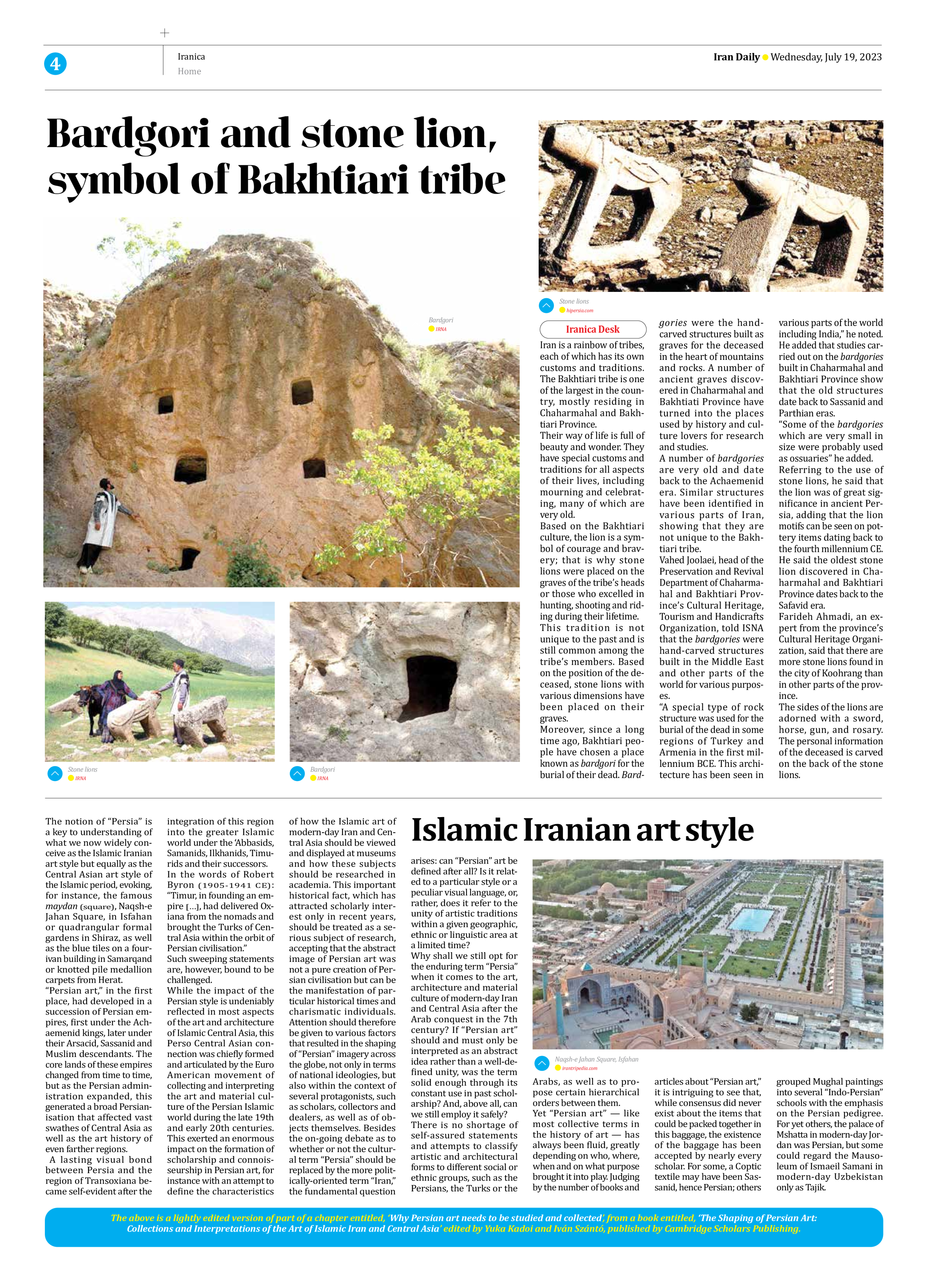
Bardgori and stone lion, symbol of Bakhtiari tribe
Iran is a rainbow of tribes, each of which has its own customs and traditions. The Bakhtiari tribe is one of the largest in the country, mostly residing in Chaharmahal and Bakhtiari Province.
Their way of life is full of beauty and wonder. They have special customs and traditions for all aspects of their lives, including mourning and celebrating, many of which are very old.
Based on the Bakhtiari culture, the lion is a symbol of courage and bravery; that is why stone lions were placed on the graves of the tribe’s heads or those who excelled in hunting, shooting and riding during their lifetime.
This tradition is not unique to the past and is still common among the tribe’s members. Based on the position of the deceased, stone lions with various dimensions have been placed on their graves.
Moreover, since a long time ago, Bakhtiari people have chosen a place known as bardgori for the burial of their dead. Bardgories were the hand-carved structures built as graves for the deceased in the heart of mountains and rocks. A number of ancient graves discovered in Chaharmahal and Bakhtiati Province have turned into the places used by history and culture lovers for research and studies.
A number of bardgories are very old and date back to the Achaemenid era. Similar structures have been identified in various parts of Iran, showing that they are not unique to the Bakhtiari tribe.
Vahed Joolaei, head of the Preservation and Revival Department of Chaharmahal and Bakhtiari Province’s Cultural Heritage, Tourism and Handicrafts Organization, told ISNA that the bardgories were hand-carved structures built in the Middle East and other parts of the world for various purposes.
“A special type of rock structure was used for the burial of the dead in some regions of Turkey and Armenia in the first millennium BCE. This architecture has been seen in various parts of the world including India,” he noted.
He added that studies carried out on the bardgories built in Chaharmahal and Bakhtiari Province show that the old structures date back to Sassanid and Parthian eras.
“Some of the bardgories which are very small in size were probably used as ossuaries” he added.
Referring to the use of stone lions, he said that the lion was of great significance in ancient Persia, adding that the lion motifs can be seen on pottery items dating back to the fourth millennium CE.
He said the oldest stone lion discovered in Chaharmahal and Bakhtiari Province dates back to the Safavid era.
Farideh Ahmadi, an expert from the province’s Cultural Heritage Organization, said that there are more stone lions found in the city of Koohrang than in other parts of the province.
The sides of the lions are adorned with a sword, horse, gun, and rosary. The personal information of the deceased is carved on the back of the stone lions.







